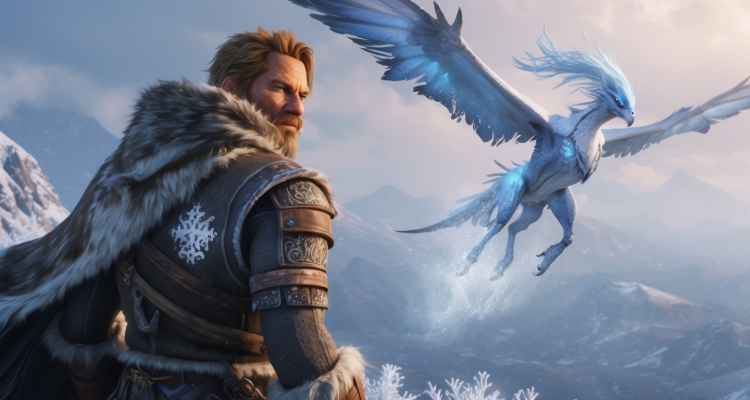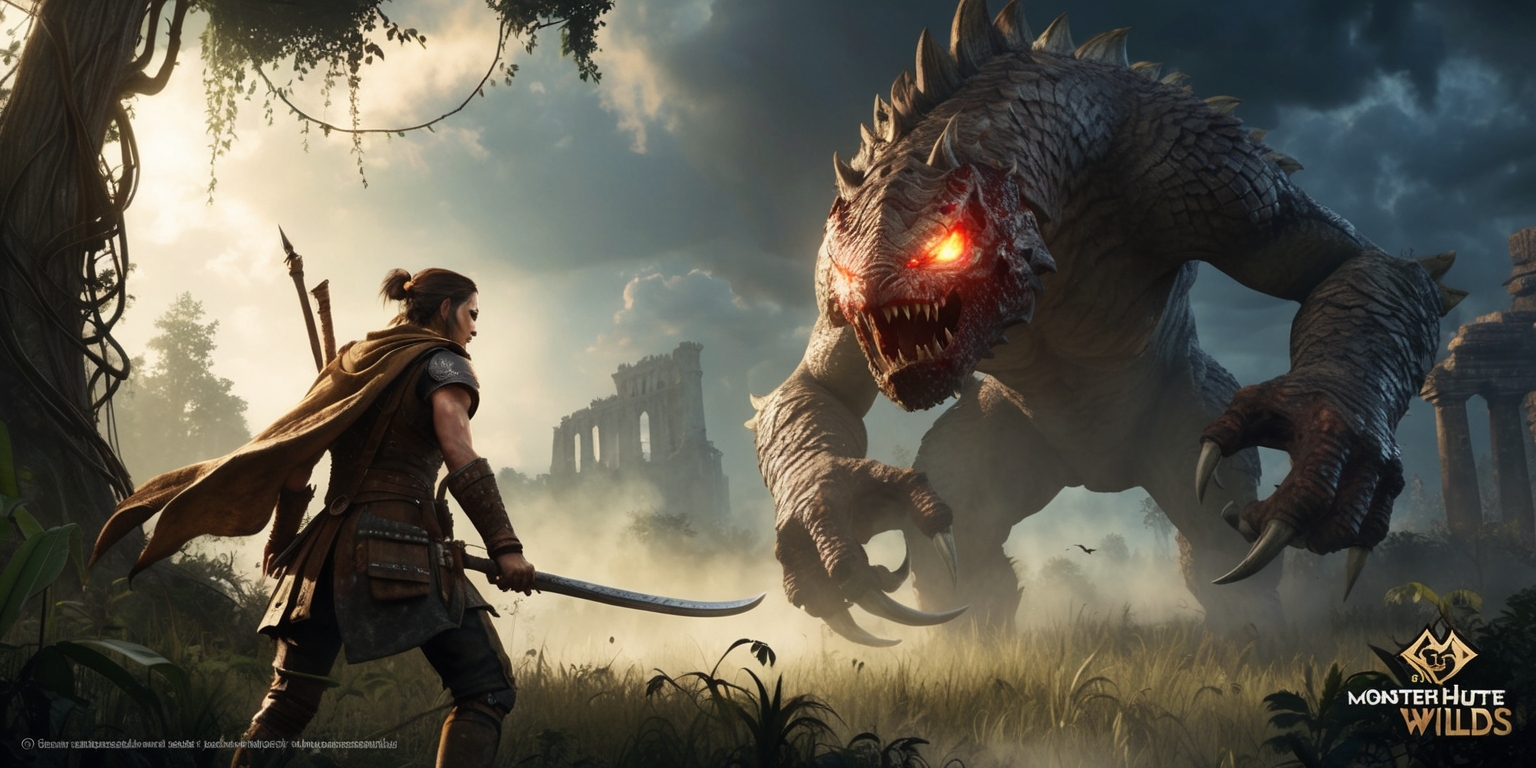
Best For You
Iceshard Quest: Tracking the Elusive Comaqchi in Monster Hunter Wilds
The world of Monster Hunter Wilds offers an immersive experience with a variety of uniquely challenging creatures and materials waiting to be discovered. Among the rare components, the Comaqchi Carapace stands out as a prized find for advanced hunters. The process of obtaining this resource requires careful planning, exploration of hostile territories, and a deep understanding of the game’s mechanics. Every expedition unfolds layers of strategy, where each encounter deepens both the player’s expertise and the overall gameplay experience. Venturing into frigid regions and tactically engaging with elusive species, players must master tracking, survival, and resource harvesting to reap the rewards that await beyond the familiar trails.
Understanding High Rank Progression
The journey toward acquiring the Comaqchi Carapace begins with a deeper commitment to the high rank elements of Monster Hunter Wilds. Early progress in the game unlocks specific chapters that pave the way for advanced challenges. Players must complete the initial mission in Chapter 4, titled New Ecosystems, which opens the door to high rank territories and formidable adversaries. Without achieving this milestone, the elusive material remains out of reach. For those who aspire to reach this level, a significant leap in both strategy and resource management is necessary. Mastering early challenges ensures that players build a skill set robust enough to confront higher-level trials while refining their overall hunting methodology.
Discovering the Iceshard Cliffs Habitat
Diving into the Iceshard Cliffs region introduces players to an environment of stark contrasts and chilling terrain. This area is known for its rugged frozen landscapes where temperatures drop drastically and survival skills are put under immense strain. The region is carefully designed, with towering ice formations and treacherous crevices that create both a visual treat and a strategic challenge. Players must pay attention to environmental cues such as subtle changes in light and sound that signal the presence of local creatures. The icy domain is as beautiful as it is dangerous, where each step can reveal new threats or hidden opportunities. Navigators must balance the lure of rare resources with cautious advancement through the harsh, unforgiving climate.
Meeting the Comaqchi Species
An integral part of the adventure is encountering the small creature known as the Comaqchi. These creatures, native solely to the Iceshard Cliffs, possess distinct behavioral nuances that differentiate them from larger, more fearsome opponents. With agile movements and a cautiously social nature, Comaqchi often appear in clusters, providing multiple opportunities for interactions or confrontations. Their very existence is clear evidence of the fragile balance at work balance of life in this frosty ecosystem, where every species has carved out its niche. Observing their patterns and movement can offer players valuable insights into tracking strategies. Engaging these creatures not only tests a hunter’s reflexes but also sharpens their adaptability as conditions change and new challenges emerge.
The Art of Tracking and Scouting

Effective tracking is vital in securing precious materials such as the Comaqchi Carapace. Utilizing the in-game regional map filter, seasoned hunters can pinpoint the areas where these small creatures are likely to appear. This tool, coupled with the guidance of scoutflies, forms the backbone of a successful expedition. Scoutflies serve as a natural extension of the player’s senses, highlighting the creature’s tracks or locations with subtle visual cues that blend with the environment. This blend of natural instinct and advanced in-game technology creates an immersive treasure hunt. Players soon learn that each successful tracking session not only brings them closer to their goal but also hones their observational skills essential for navigating the unpredictable wilderness.
The Dynamics of Group Encounters
A defining feature of encounters within the Iceshard Cliffs is that the elusive Comaqchi typically travel in small groups, which offers a strategic advantage to patient hunters. When one creature is engaged, the presence of others in the vicinity increases the odds of securing desired materials. This social dynamic requires the player to manage multiple targets while ensuring that each encounter unfolds optimally. Each group encounter brings with it layers of tactical decision-making—whether to engage immediately or study their behavior from a distance—that affect both the hunt’s progress and overall resource efficiency. The grouping behavior of these creatures also reflects the interconnected nature of the ecosystem, reminding players of the fine balance between opportunity and risk in this challenging environment.
Harvesting the Coveted Carapace
Once an encounter with the Comaqchi has reached its tactical climax, the next critical phase is the process of harvesting. Following a successful defeat, the carcass becomes the focal point for interaction. This phase is not guaranteed to yield the coveted Comaqchi Carapace every time, with chance playing a significant role in the harvest outcome. However, the game balances this uncertainty with multiple opportunities, as the natural grouping of Comaqchi enables repeated attempts. This harvesting process underscores themes of persistence and strategic resource management within the game. Precision in timing and interaction is crucial, and veteran players often develop refined techniques to maximize their yields, transforming a moment of vulnerability into a rewarding step forward in their progression.
Using Tactical Resources in Frigid Conditions
Surviving the icy expanse of the Iceshard Cliffs demands careful management of one’s resources. The frigid cold of the terrain can impair the hunter, making it imperative to plan for extreme weather conditions. Players must equip themselves with consumables such as Heatmantle Bugs or Hot Drinks, which function to lessen the harmful impacts of the low temperatures. These tactical resources act as critical lifelines, allowing hunters to maintain their focus and agility in the harsh environment. Each use of These consumable resources might just tip the scales in favor of success and setbacks during long expeditions. This careful balancing of environmental endurance with combat preparedness adds another layer of depth to the overall hunting strategy in Monster Hunter Wilds.
Challenges in Unforgiving Terrains
Beyond the primary focus on the Comaqchi lies a myriad of hazards inherent in the rugged Iceshard Cliffs. The terrain itself, with its icy surfaces and narrow paths, forces players to adapt their movements and guard against unexpected accidents. Additionally, the region is home to several powerful creatures that share the space with the more diminutive Comaqchi. Navigating this perilous landscape means not only focusing on the target but also staying alert to sudden encounters from larger adversaries. Each step demands calculated movement and a keen anticipation of potential dangers. For hunters, this multifaceted challenge enhances the overall thrill of exploring such wild terrains and tests their ability to manage risk while seeking valuable rewards.
Integration into the Larger Gameplay Ecosystem
The pursuit of the Comaqchi Carapace is seamlessly woven into the rich gameplay fabric of Monster Hunter Wilds. This quest reflects the broader themes of exploration, resource management, and survival that define the game. Players are encouraged to build a comprehensive skill set where tactical combat, navigation, and environmental awareness converge. The challenges in securing the carapace provide a microcosm of the larger game, emphasizing the importance of preparation and strategic decision-making at every step. Whether it is tracking elusive creatures, managing consumable resources, or adapting to dynamic environmental challenges, each aspect plays a role in deepening the immersive hunting experience. This holistic integration ensures that every expedition contributes to a rewarding progression system.
Optimizing Hunting Techniques for Best Results
Strategizing the hunt In Monster Hunter Wilds, success hinges on a mix of steady patience and thoughtfully measured risk-taking. Advanced players often refine their approaches by repeatedly engaging in scenarios where the Comaqchi appears. Through iterative experimentation, hunters learn optimal timing for engagements and the best moments to harvest resources from the creature’s remains. The game’s design encourages repeated forays into challenging areas, rewarding consistent efforts and adaptive tactics. This technique refinement is supported by the interplay of various gameplay systems, where every decision can influence future success. By focusing on these subtle intricacies, players can maximize the returns on their risk and effort, substantially improving their odds of obtaining rare materials while maintaining steady progression through the game’s intricately designed ecosystem.





